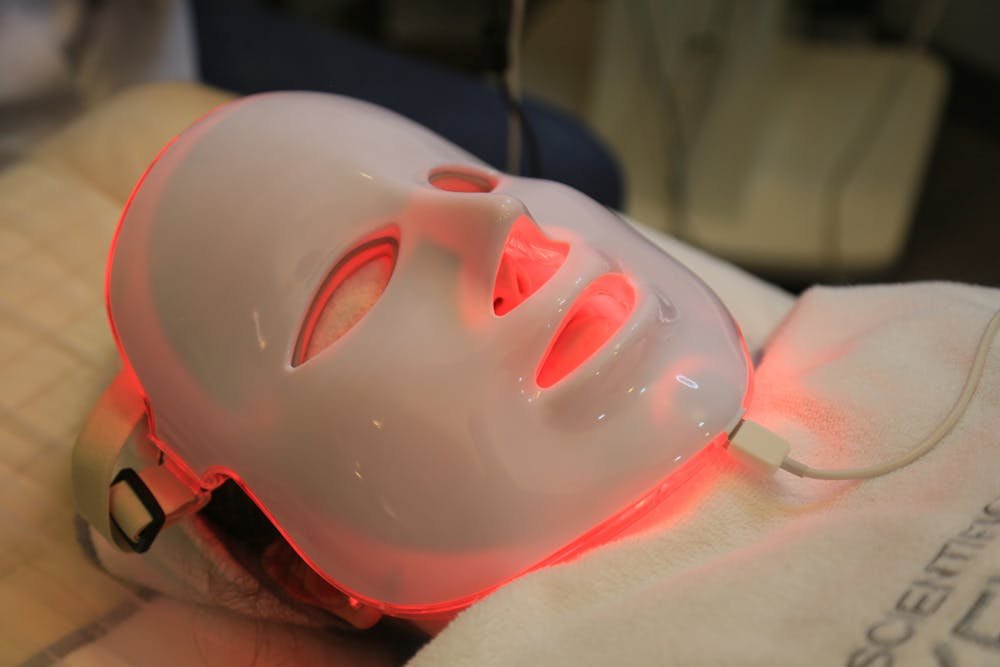Red light therapy is a groundbreaking, science-backed treatment that harnesses the power of natural light to boost healing, reduce pain, and enhance overall wellness. By gently stimulating your cells with safe, low-level wavelengths, it unlocks your body’s natural ability to repair and rejuvenate. This simple yet powerful therapy is transforming how people approach health and recovery every day.
What Is Red Light Therapy?
Red Light Therapy (RLT), also known as photobiomodulation, is a non-invasive treatment that uses low-wavelength red light and near-infrared light to improve cellular function and support healing.
Unlike UV rays, red light doesn’t damage your skin. Instead, it penetrates deep into your tissues, stimulating energy production and reducing inflammation.
It’s painless. Safe. And rooted in real science.
How Does Red Light Therapy Work?
RLT works at the cellular level.
When red and near-infrared light (600–1000nm wavelengths) penetrate your skin, your cells absorb the light. This boosts mitochondrial activity—the part of your cells that generates energy (ATP).
Result? More energy, faster healing, and better function.
This cellular boost affects everything from skin repair to muscle recovery to brain health.
This isn’t magic—it’s a well-researched biological process. Leading institutions like Harvard Medical School and NASA have studied and validated red light therapy’s mechanisms.
Key Benefits of Red Light Therapy
1. Reduces Inflammation and Pain
Red light helps reduce inflammation by downregulating pro-inflammatory cytokines. It also enhances blood flow, helping oxygen and nutrients reach affected tissues faster.
Effective for:
- Arthritis
- Joint pain
- Back pain
- Muscle soreness
2. Promotes Skin Health and Anti-Aging
RLT stimulates collagen production, enhances blood circulation, and helps repair damaged tissues.
Benefits include:
- Fewer wrinkles
- Improved skin tone
- Faster wound healing
- Reduced acne and scars
3. Enhances Cognitive Function
Near-infrared light can reach the brain through the skull. Research suggests it improves cognitive performance, especially in people with depression, brain injuries, or age-related decline.
Reported effects:
- Better memory
- Improved focus
- Reduced anxiety and depression
4. Accelerates Muscle Recovery and Performance
Athletes love red light therapy. It’s used to reduce muscle fatigue, enhance endurance, and promote faster recovery post-exercise.
Benefits for fitness:
- Decreased muscle soreness
- Faster healing after injury
- Enhanced performance over time
5. Improves Sleep and Energy
Red light helps reset your circadian rhythm by signaling the body to produce melatonin naturally—without disrupting your sleep like blue light.
Real-life impact:
- Better sleep quality
- More daytime energy
- Deeper rest
Is Red Light Therapy Safe?
Yes. Red light therapy is FDA-approved for certain conditions and widely considered safe when used appropriately.
It’s non-invasive, drug-free, and has no known serious side effects when used at therapeutic levels.
However, overuse or poorly manufactured devices may pose risks, such as eye strain or temporary skin irritation. Always follow device guidelines or consult a professional.
Types of Devices You Can Use
At-Home Devices
- LED light panels
- Red light face masks
- Handheld wands
- Infrared therapy belts
Professional Treatments
- Dermatology clinics
- Wellness centers
- Physiotherapy offices
Choose devices with FDA clearance or clinical validation. The wavelength and irradiance matter most.
Scientific Support and Expert Consensus
Red light therapy isn’t a wellness fad—it’s backed by over 4,000 peer-reviewed studies.
Trusted sources:
- National Institutes of Health (NIH)
- Harvard University
- NASA
- Journal of Clinical and Aesthetic Dermatology
These institutions affirm red light therapy’s effectiveness for inflammation, skin healing, chronic pain, and more—when used within safe protocols.
How to Use Red Light Therapy Safely
- Use devices emitting 600–1000nm wavelength
- Keep sessions to 10–20 minutes, 3–5 times a week
- Maintain consistent distance (usually 6–18 inches)
- Protect your eyes, especially with near-infrared light
- Track your progress over 4–6 weeks
Start small and be consistent. Effects may take time—but they build up.
FAQs About Red Light Therapy
Yes. Thousands of studies have documented its safety and benefits, especially for skin, pain, and inflammation.
Yes, but 3–5 times a week is often sufficient. Avoid overuse—it doesn’t enhance results
Some studies suggest it may help with fat metabolism and body contouring, but it’s not a substitute for diet and exercise.
Mild benefits (like energy and sleep) may show within 1–2 weeks. Skin improvements and pain relief often appear after 4–6 weeks.
Generally, yes. But those with photosensitivity or certain conditions should consult a healthcare provider.
Conclusion: Light Your Way to Healing
Red light therapy isn’t hype—it’s hope backed by science.
Whether you’re looking to heal faster, think clearer, or glow brighter, this technology offers a safe, proven way to enhance your well-being.
Start small. Stay consistent. Trust the science.





